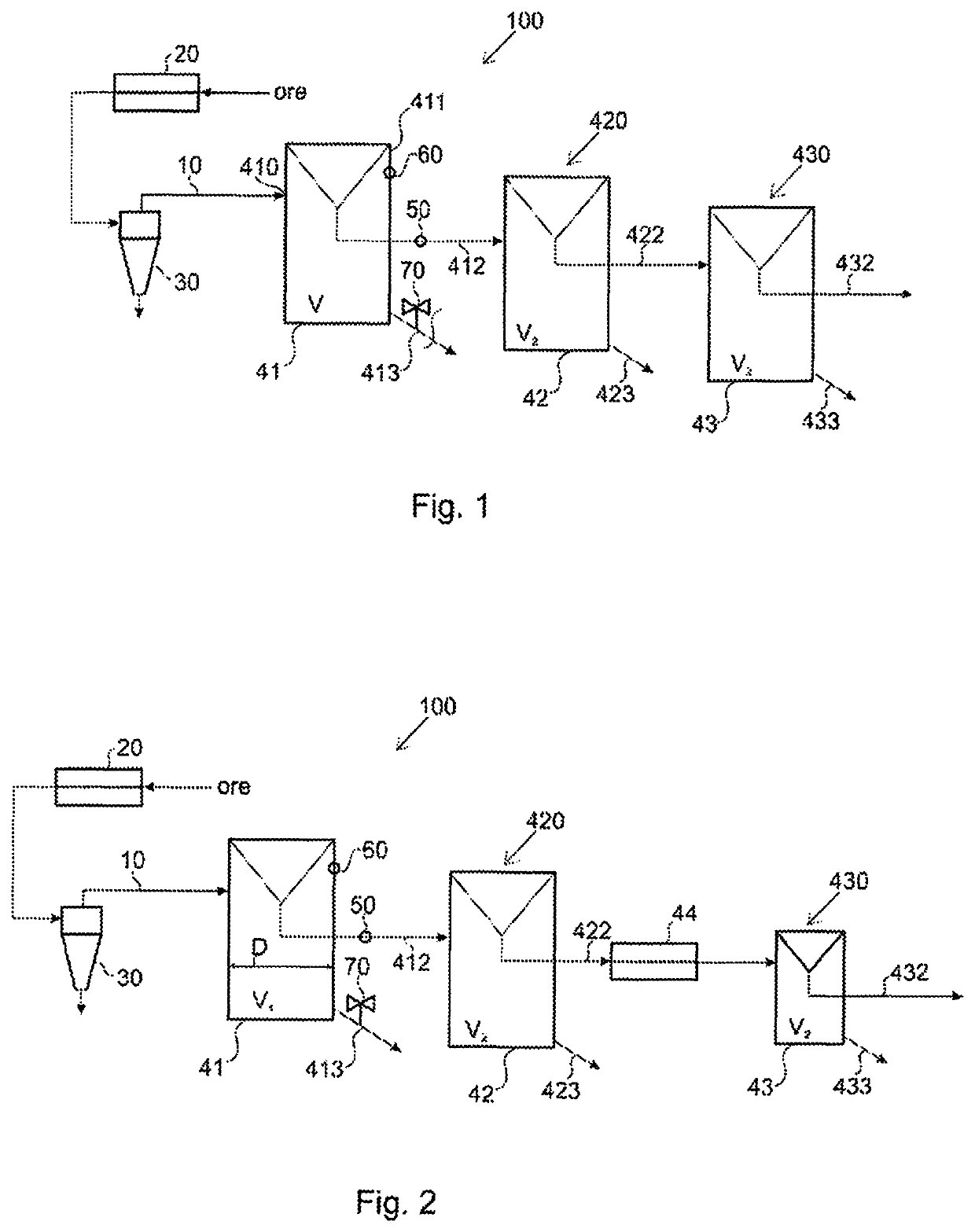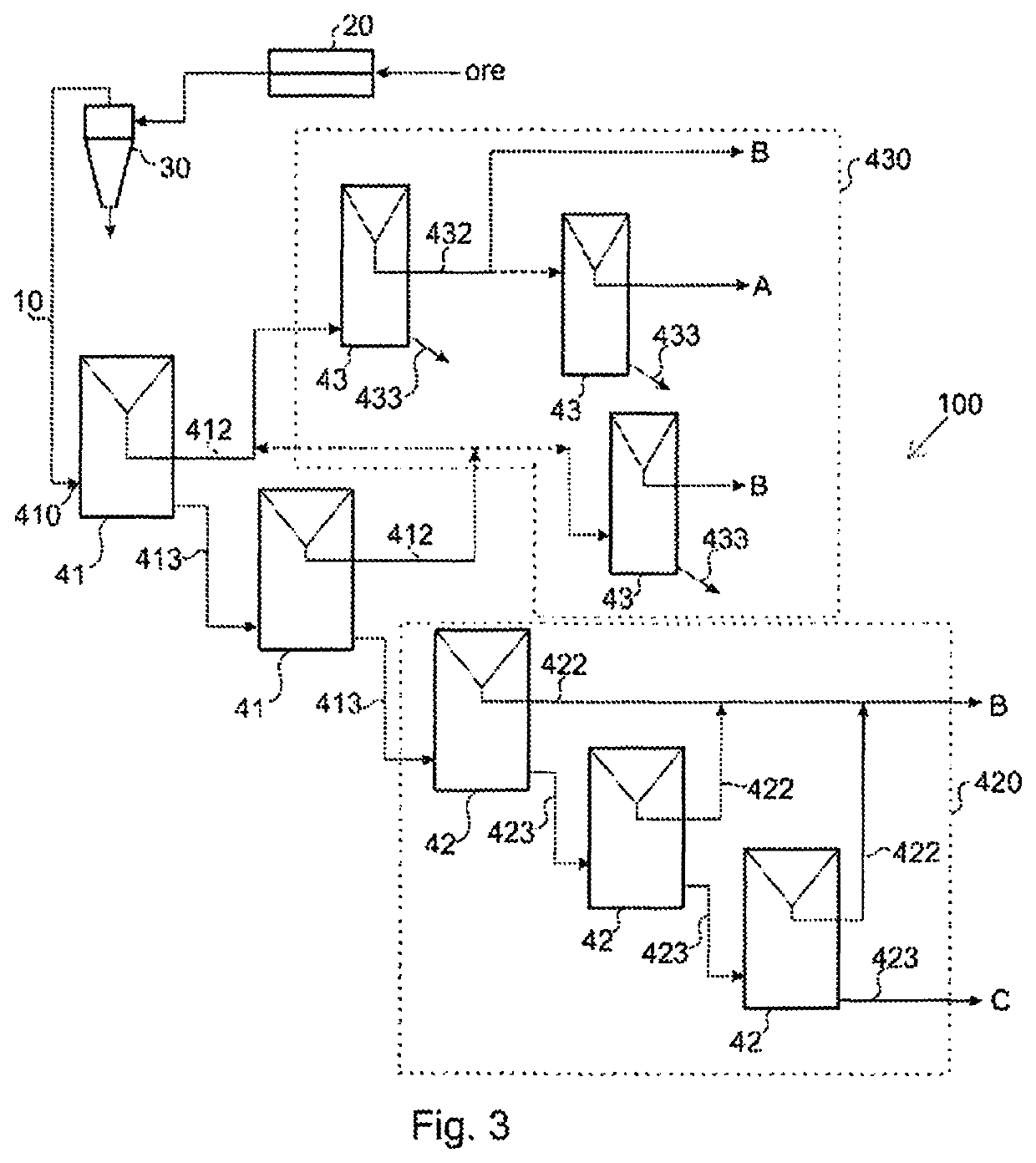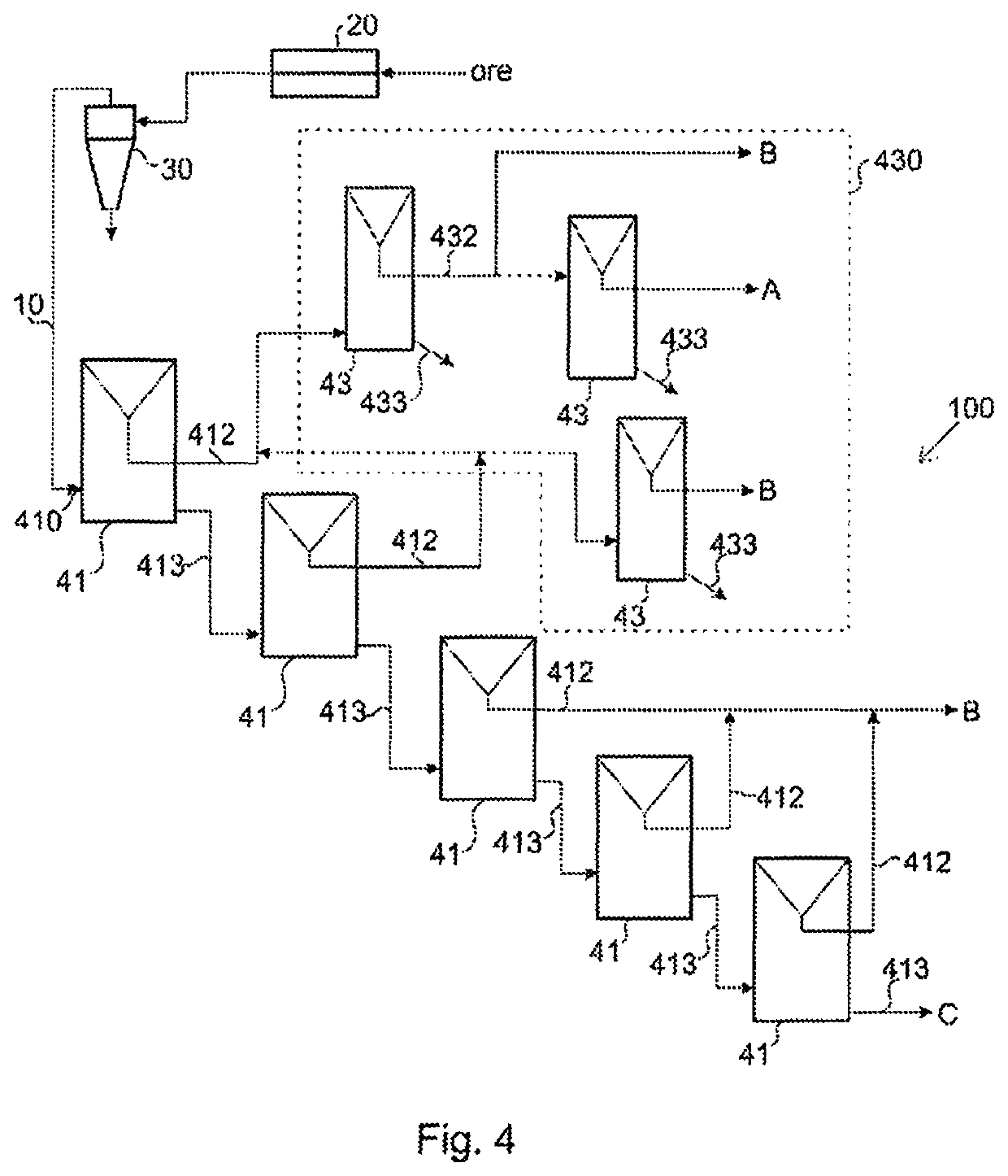Flotation method
a technology of froth layer and flotation method, which is applied in the direction of liquid/fluent solid measurement, grain treatment, instruments, etc., can solve the problems of froth layer, coarse ore particles may not be able to travel all the way, etc., and achieves a higher overall recovery, lower concentrate grade, and greater mass pull
- Summary
- Abstract
- Description
- Claims
- Application Information
AI Technical Summary
Benefits of technology
Problems solved by technology
Method used
Image
Examples
Embodiment Construction
[0065]Reference will now be made in detail to the embodiments of the present invention, examples of which are illustrated in the accompanying drawings.
[0066]In FIGS. 1 to 4, a flotation cell 41 receives a flow of suspension, that is, a flow of slurry 410 comprising ore particles, water and flotation chemicals such as collector chemicals and non-collector flotation reagents. The collector chemical molecules adhere to surface areas on ore particles having the valuable mineral, through an adsorption process. The valuable mineral acts as the adsorbent while the collector chemical acts as the adsorbate. The collector chemical molecules form a film on the valuable mineral areas on the surface of the ore particle. The collector chemical molecules have a non-polar part and a polar part. The polar parts of the collector molecules adsorb to the surface areas of ore particles having the valuable minerals. The non-polar parts are hydrophobic and are thus repelled from water. The repelling cause...
PUM
| Property | Measurement | Unit |
|---|---|---|
| volume | aaaaa | aaaaa |
| volume | aaaaa | aaaaa |
| diameter | aaaaa | aaaaa |
Abstract
Description
Claims
Application Information
 Login to View More
Login to View More - R&D
- Intellectual Property
- Life Sciences
- Materials
- Tech Scout
- Unparalleled Data Quality
- Higher Quality Content
- 60% Fewer Hallucinations
Browse by: Latest US Patents, China's latest patents, Technical Efficacy Thesaurus, Application Domain, Technology Topic, Popular Technical Reports.
© 2025 PatSnap. All rights reserved.Legal|Privacy policy|Modern Slavery Act Transparency Statement|Sitemap|About US| Contact US: help@patsnap.com



